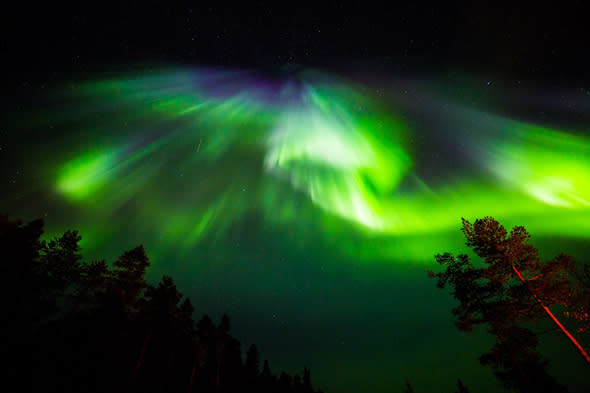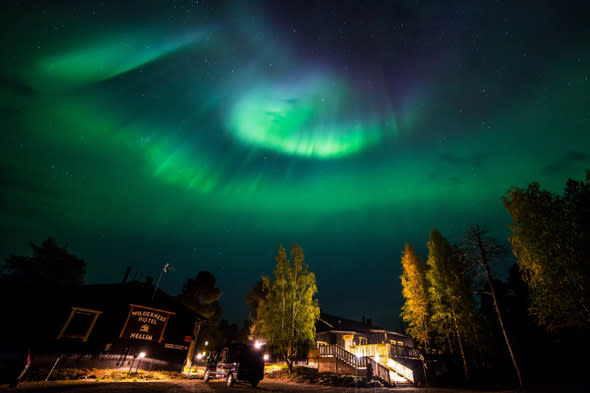Are these the last photos of the Northern Lights at their peak?

NASA announced in June that the sun's polarity had finally flipped and we were beyond the peak of the current solar maximum - a period of supercharged solar activity that usually occurs every 11 years and serves as a catalyst for spectacular Northern Lights displays.
But rather than signalling the demise of Northern Lights activity, we are actually only half way through. In fact, experts have predicted that intense auroras are more likely to occur as a Solar Cycle starts to decline.
Doug Biesecke of the US-based NOAA Space Weather Prediction Center believes "there is likely to be a sustained period of heightened lights activity into 2015."
Dean Pesnell of the Goddard Space Flight Center believes that "Solar Cycle 24, such as it is, will probably start fading by 2015." NASA says that ironically, that is when some of the bigger flares and magnetic storms could occur.
And last week, the Northern Lights made their first appearance of the season in Finnish Lapland and Aurora Borealis holiday specialist The Aurora Zone was there to capture the stunning first sightings, proving that the best time for spotting spectacular phenomenon is far from over.
Pictured on Sunday 21 and Monday 22 September, the amazing display lit up the sky above Muotka and Jeris.
In June, NASA announced that the sun's polarity had finally flipped which heralded the peak of Solar Cycle 24 and signified just the mid-point in this particular Solar Maximum (the period when the Northern Lights are historically at their most frequent and spectacular). With only half of the Solar Maximum behind us, but the other half still yet to come, the coming autumn/winter of 2014-15 could represent the best opportunity to see the Northern Lights until the peak of Solar Cycle 25.
Alistair McLean at The Aurora Zone tells AOL Travel: "The 2014-15 Aurora hunting season has started not so much with a bang but with a series of explosions; absolutely massive explosions on the surface of the sun which have caused some astonishing Northern Lights to appear in higher latitudes.

"Naturally, our Aurora Zone guides and photographers have been embracing the displays with the excited and childlike enthusiasm of an eight-year-old boy on the first day of the new football season."
Earlier in September, we reported that huge numbers of charged particles headed towards the earth's atmosphere gave stargazers in northern England, Scotland and Northern Ireland the chance to glimpse the Northern Lights.
Two large explosions on the sun's surface sent massive numbers of particles flying towards earth, heightening the chances of colourful aurora borealis displays.
Forecasters said that fog and low-hanging cloud could hamper the view of those living inland and getting away from artificial lighting would heighten the chances of seeing them.
See more photos of the first Northern Lights display in Finnish Lapland for the 2014/15 winter season:
Related articles
Is that a number 3 in Sweden's Northern Lights?
Northern lights top Brits' holiday bucket list







